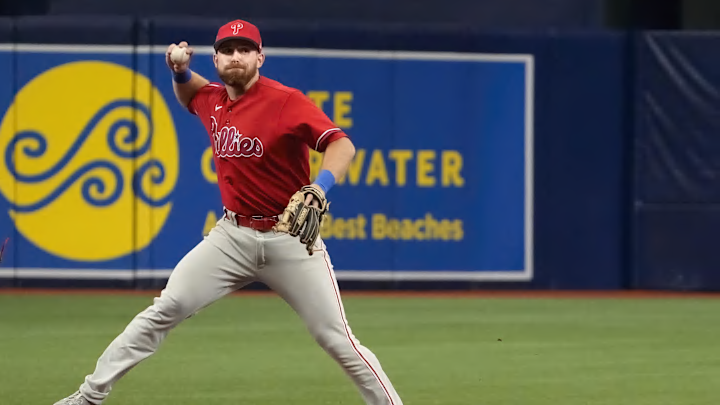The almost five-week-long Arizona Fall League (AFL) has turned the lights off for the final time this season, marking an official end to the 2023 minor league season. After a phenomenal showing in the six-team competition, Philadelphia Phillies prospect Oliver Dunn was named the AFL Breakout Player of the Year.
The 26-year-old second baseman wasn't the top prospect the Phillies sent to the desert. Heck, he isn't even ranked by MLB Pipeline in the organization's Top 30 prospects list or the league-wide Top 100 list.
But Dunn opened some eyes with his AFL performance for the Scottsdale Scorpions.
After making news with his performance over the first three weeks of the league, he and three other Phillies prospects were named to the NL squad for the Fall Stars Game on Nov. 5.
Dunn finished his AFL stint with a .342/.455/.616 slash line in 73 at-bats over 19 games. He hit two home runs and six doubles, drove in 11, and scored 17 times.
Per Rob Terranova of MLB.com, the former Rule 5 pick from the New York Yankees played three infield positions for the Scorpions and "... finished perfect in stolen base attempts — going 12-for-12 — and ranked second in triples (4), fourth in OPS (1.071), and fifth in average (.342)."
Dunn's first season in the Phillies' organization a resounding success
In his first season in the Phillies organization, he proved to be a smart Rule 5 pickup. He hit .271 and carried a .902 OPS and 148 wRC+ over 119 games in Double-A Reading. He finished his year with the Fightin Phils with 21 home runs, 78 RBI, 65 runs scored, and 16 stolen bases.
As good as those numbers look, the team is probably more happy with the progress the left-handed hitting Dunn made in his plate discipline and swing decisions.
He brought his strikeout rate down to 27.5 percent after striking out 35.4 percent of the time between Double- and Triple-A in the Yankees' system last season. It could still go lower, but considering he walked at a 16.2 percent clip, it's manageable for now.
In the AFL, he struck out 26 times for a 29.5 percent rate, but again, walked 15 times for a 17 percent walk rate.
